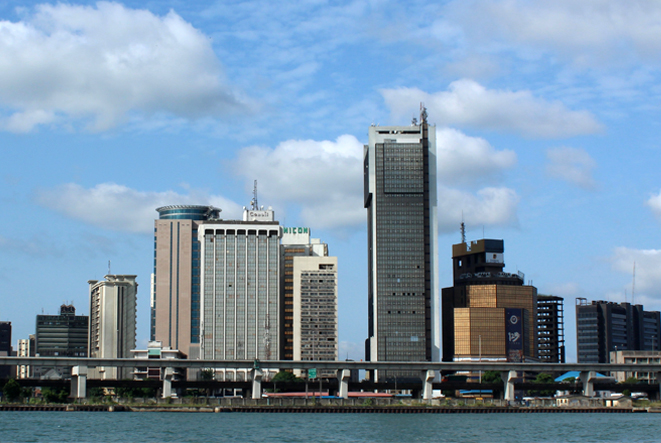
The book – Who moved my cheese by Dr. Spenser Johnson – is both a literal masterpiece and is indisputably relevant in modern leadership and business strategy. It is a tale of four characters who lived in a maze and their love for cheese. The lessons hidden in the stories have resonated in corporate board rooms and guided business decisions for decades.Businesses exist to further the interest of their promoters, either in terms of financial returns or social impact. Organizations thrive on the value they can generate for stakeholders and how much their customers are willing to pay for such value.
Despite the uncertainties that exist currently in our world and an ever-expanding scope of divergence in opinions of professionals around the world on the best business models and strategies to employ so as to ensure a competitive edge, there has been an overwhelming consensus that technology is the major disrupter of the modern business landscape.
In the last two decades, traditional businesses have seen their market share eroded by ‘small’ underdogs driven by technology. New category kings have emerged from logistics to healthcare, banking to manufacturing, insurance to agriculture – no industry is spared. The market leaders of yesterday are in the battle of their lives and only two options seem to be available on the horizon – to innovate or to die!
Despite the different shades through which these corporations come; they share certain identifiable similarities.
The new and emerging tech start-ups identify existing pain-points in the traditional business landscape and seek to solve them. They leverage technology to provide a streamlined and simple process flow for complex and complicated tasks.
While the traditional businesses thrive on physical infrastructure and labour, the digital businesses thrive on data to identify and anticipate customer requirements. Data is largely seen as the capital of the new age!
Elon Musk is a serial entrepreneur known for his grit, innovation, audacity, and unrivalled drive. He has taken the most insane bets on technology and what can be achieved through innovation. In 1999 he founded X.COM, a company that later became PAYPAL at a time easy cross border payment was required to unlock the potential of e-commerce and the internet in general. 2002 will always be remembered as the year Elon became a billionaire as PayPal was later acquired by eBay for $1.5bn.
Nigeria’s Interswitch and Paystack in the financial technology space were rewarded with a billion-dollar capitalization upon the successful Visa and Stripe deals respectively. Currently, both companies have taken their operations beyond the borders of Nigeria and it is unlikely that they will not replicate the momentum they have achieved in Nigeria. All over the world, there are similar success stories of new tech companies redefining competition to break into the big leagues.
Tech-driven companies are also known for their lean operational cost, leveraging on cloud technology to bootstrap their way into multibillion-dollar corporations. In Africa, Kobo 360 has become an active threat to the conventional hauling companies by the introduction of their services to the multinationals, big pharmaceuticals, and manufacturing companies. In 18 months, the company has aggregated more than 4,000 trucks and has done over 40,000 trips for their customers. Through their platform, their clients are able to monitor the location of their merchandise all over the world in real-time. Report generation and vendor management have been greatly simplified by the Kobo360 solution which aggregates trucks for delivery. The success of this platform can be attributed to the comfort it affords its employers and the revenue assurance it gives to the truck owners. The operational cost of these businesses has also become very slim, thanks to Kobo360.
The emergence of disrupting technology while viewed by many organizations as a threat is an opportunity for organizational repositioning and rebirth that should aim to consolidate on the wins of the past. It has been identified that the actual threat to the existence of traditional businesses is the non-adoption of technology to streamline operations and failure to create a culture of continuous learning and innovation.
According to the United Kingdom Department for Digital, Culture, Media and Sport, “…digital transformation is having a wide-ranging impact on the business environment, creating both opportunities and challenges. Inter-related trends such as e-commerce, big data, machine learning, artificial intelligence (AI), and the Internet of Things (IoT) could lead to large productivity gains for the economy. However, disruption to existing business and social models, as well as established markets, will disrupt the lives of millions of citizens.”
Undoubtedly, social behavioural patterns such as the way people communicate, how relationships are forged and maintained, including the way work is done have been greatly impacted by technology. The consumption patterns of customers are also changing and evolving rapidly. This has greatly underlined the importance of continuous innovation if an organization must stay relevant in its space. Netflix is an example of a company that has transformed greatly in the past decade to maintain its market position. The company has metamorphosized from a video CD rental company to an online Video-on-demand company. To maintain its position as the category king in Video streaming, Netflix started producing its own content in 2015.
Kodak- a company founded by George Eastman and Henry Strong on May 23, 1892, dominated the analogue photo industry for about a century. While they identified the emerging threat of digital photography, Kodak did not move quickly in its adoption leading ultimately to its filling Chapter 12, Bankruptcy protection in the United States in January 2012. To reposition the company, they had to shed most of its digital businesses and patents to Apple, Samsung, Adobe, Facebook, Google and HTC. This also came at a great cost losing its market position in the film and photo industry.
It’s rival – Fujifilm was a more dynamic company. Over time, Fuji has embarked on management, process, and product reforms to ensure its offering is in line with evolving technologies. This led them to venture into X-ray films, and other digital medical photography expanding their dominance in the photo space. Today, while Kodak market capitalization is about $515.70m, Fujifilm is a $35bn market cap company.
In Nigeria, funds transfer used to be the exclusive preserve of the traditional banking institutions. This is no longer the case since the proliferation of Fintech companies in the country. It has not only driven down the charges paid for the services by consumers but has also driven down the turnaround time for these transactions by more than 50%. Transactions can now be initiated and consummated without visiting the physical offices of these institutions. Different types of biometric and two-factor authentications have been built into the process ensuring that consumers have increased control and faith in the solutions being offered to them. Companies like Paystack, Flutterwave and Interswitch are driving innovation in this space in Nigeria.
Before now, physical billboards, television and radio adverts has been at the centre of advertisement in Nigeria. In 2020, there were 3.96 billion active social media users in the world an increase of 10.9% year-on-year from 3.48 billion in 2019. With 4.54 billion unique Internet users, digital marketing is fast taking the center stage as the preferred means of advertising. The big ‘billboard’ advert companies will certainly struggle unless they upskill to adopt digital marketing which has proven to be more effective. With digital marketing, a targeted advert with measurable outcomes is possible through various feedback mechanisms, unlike the traditional methods where it is extremely difficult to predict the outcome of an advert campaign.
Digitization of operations comes with its wins. Some immediate gains include decrease in the recurrent operating cost of the business, improved customer experience as well as increased revenues. Audi’s transformation of its traditional showrooms into a modern digital experience through the incorporation of both architecture and technology led to a 60% increase in its revenue in 2014.
Retail and Digital Transformation
With the global COVID–19 pandemic and the attendant economic lockdown, the foot traffic in physical stores disappeared in many jurisdictions forcing global retail stores to take the hard decision of fast-tracking their digital transformation timetable. For digital-driven retail businesses, their market capitalization witnessed an unprecedented appreciation. Amazon market capitalization was around $920bn in December 2019. Over the last eighteen months, it has jumped by almost $740bn, reaching $1.65trn market capitalization as of today. Its revenue also witnessed a 38% increase year on year in 2020. In the same year, Jumia was also able to grow its gross profit by 12% – a testament to the increasing adoption of eCommerce in Africa.
MIT Sloan Management identified the following three key areas of Digital Transformation.
- Operational Processes — This involves streamlining and simplifying traditional processes leveraging digital tools and data as an important tool for strategic business decisions.
- Customer Experience — Making sense of the operational data collected will enable organizations to understand and anticipate customers’ needs and pain-points and leveraging on technology to drive customer growth and satisfaction.
- Business Models — transforming the business by augmenting physical offerings with digital tools and services, introducing digital products, and using technology to provide global shared services
Cultural inertia is one of the major setbacks for moving away from the traditional business methods and processes to technologically enabled ones. There is usually stern push-back across the strata of the workforce. This feeling is precipitated by the fear of redundancy should the new processes be adopted. To militate against this challenge, there is a need for strong management buy-in with assurance to all stakeholders that their interests will be protected in the new regime. Adequate engagements and training for both the management and employees on the impact and merits of digitization must be organized to drive buy-in.
The cost of employing digital alternatives for different roles in the organization is also material. However, not adapting processes to the rapidly changing business environment driven by technology is more expensive and could ultimately lead to the demise of the organization.
No matter the industry or the belief of its drivers, aligning your business with the evolution of technology is very essential and has been identified as a key condition for remaining relevant. Consumers are always on the lookout for better services at a cheaper price. Globalization has also torn down the boundaries of markets making available options for a wide range of services easily identifiable as well as accessible. You no longer contend with only the competitors from your jurisdiction anybody or any organization that can offer a better service at a fair price can easily eat your lunch.
The cheese is on the move! As a business leader, you either move with the cheese or live to ask the question “Who moved my cheese?’ Remember, someone, somewhere in a warehouse is currently working on taking a part of your business. Don’t let him/her. You must be ready to navigate the maze of technology and business innovation to stay ahead.







